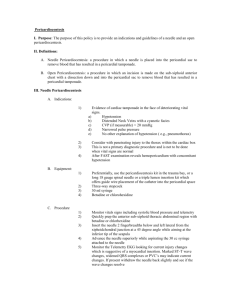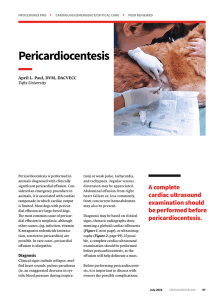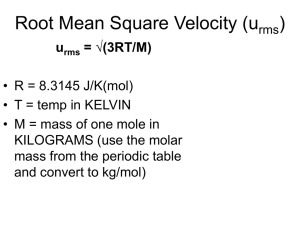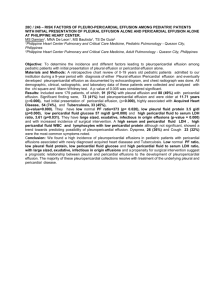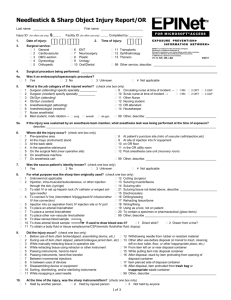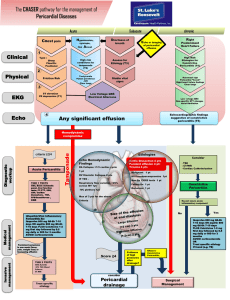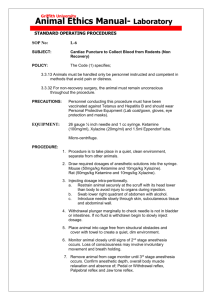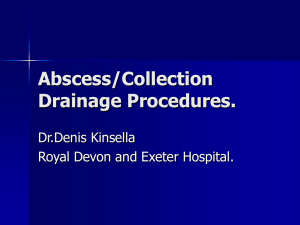Instructions for placement and use of the
advertisement
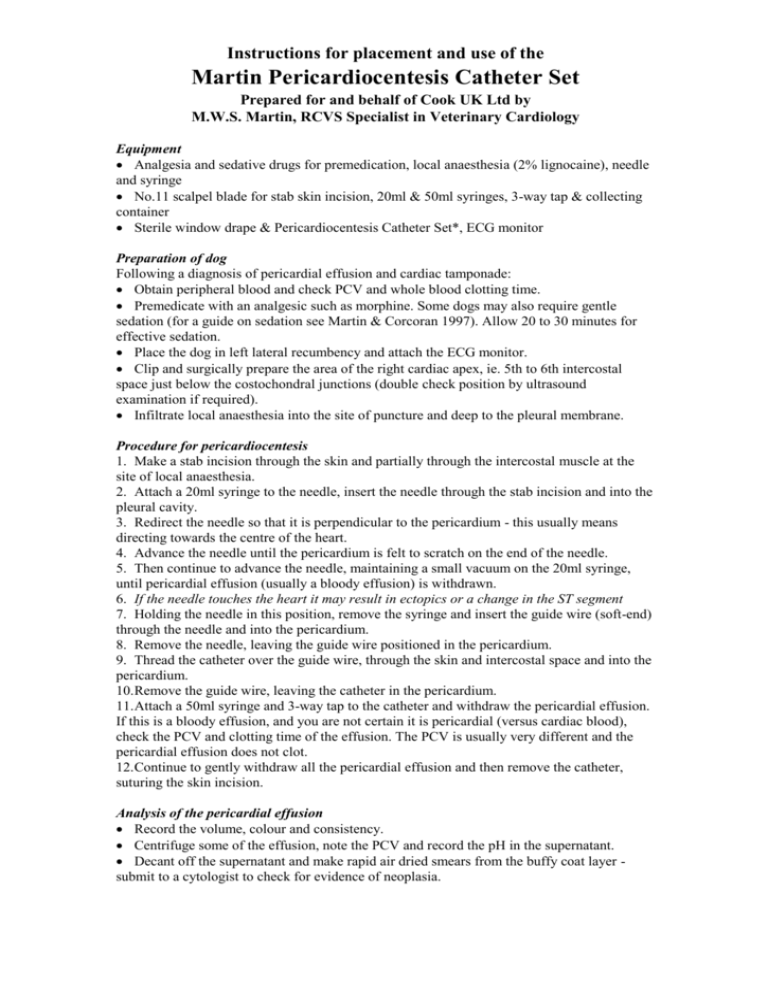
Instructions for placement and use of the Martin Pericardiocentesis Catheter Set Prepared for and behalf of Cook UK Ltd by M.W.S. Martin, RCVS Specialist in Veterinary Cardiology Equipment Analgesia and sedative drugs for premedication, local anaesthesia (2% lignocaine), needle and syringe No.11 scalpel blade for stab skin incision, 20ml & 50ml syringes, 3-way tap & collecting container Sterile window drape & Pericardiocentesis Catheter Set*, ECG monitor Preparation of dog Following a diagnosis of pericardial effusion and cardiac tamponade: Obtain peripheral blood and check PCV and whole blood clotting time. Premedicate with an analgesic such as morphine. Some dogs may also require gentle sedation (for a guide on sedation see Martin & Corcoran 1997). Allow 20 to 30 minutes for effective sedation. Place the dog in left lateral recumbency and attach the ECG monitor. Clip and surgically prepare the area of the right cardiac apex, ie. 5th to 6th intercostal space just below the costochondral junctions (double check position by ultrasound examination if required). Infiltrate local anaesthesia into the site of puncture and deep to the pleural membrane. Procedure for pericardiocentesis 1. Make a stab incision through the skin and partially through the intercostal muscle at the site of local anaesthesia. 2. Attach a 20ml syringe to the needle, insert the needle through the stab incision and into the pleural cavity. 3. Redirect the needle so that it is perpendicular to the pericardium - this usually means directing towards the centre of the heart. 4. Advance the needle until the pericardium is felt to scratch on the end of the needle. 5. Then continue to advance the needle, maintaining a small vacuum on the 20ml syringe, until pericardial effusion (usually a bloody effusion) is withdrawn. 6. If the needle touches the heart it may result in ectopics or a change in the ST segment 7. Holding the needle in this position, remove the syringe and insert the guide wire (soft-end) through the needle and into the pericardium. 8. Remove the needle, leaving the guide wire positioned in the pericardium. 9. Thread the catheter over the guide wire, through the skin and intercostal space and into the pericardium. 10. Remove the guide wire, leaving the catheter in the pericardium. 11. Attach a 50ml syringe and 3-way tap to the catheter and withdraw the pericardial effusion. If this is a bloody effusion, and you are not certain it is pericardial (versus cardiac blood), check the PCV and clotting time of the effusion. The PCV is usually very different and the pericardial effusion does not clot. 12. Continue to gently withdraw all the pericardial effusion and then remove the catheter, suturing the skin incision. Analysis of the pericardial effusion Record the volume, colour and consistency. Centrifuge some of the effusion, note the PCV and record the pH in the supernatant. Decant off the supernatant and make rapid air dried smears from the buffy coat layer submit to a cytologist to check for evidence of neoplasia. Alternative uses of the Pericardiocentesis Catheter Set This is a useful general purpose catheter and inexpensive to keep in stock for those unexpected emergencies! Emergency drainage of a pneumothorax. Drainage of pleural effusion in cats and small dogs, temporary drainage for larger dogs. Peritoneal lavage. *Martin Pericardiocentesis Catheter Set - Cook order number is V-PLS-911A Note: The previous version (still advertised in the brochure) was the Direct Puncture Pericardiocentesis set (V-TPT-1020U-Martin) Recommended reading Martin & Corcoran (2006) Notes on: Cardiorespiratory disease of the dog and cat, 2nd ed. Blackwell Science. ISBN 0-632-03298-7.
